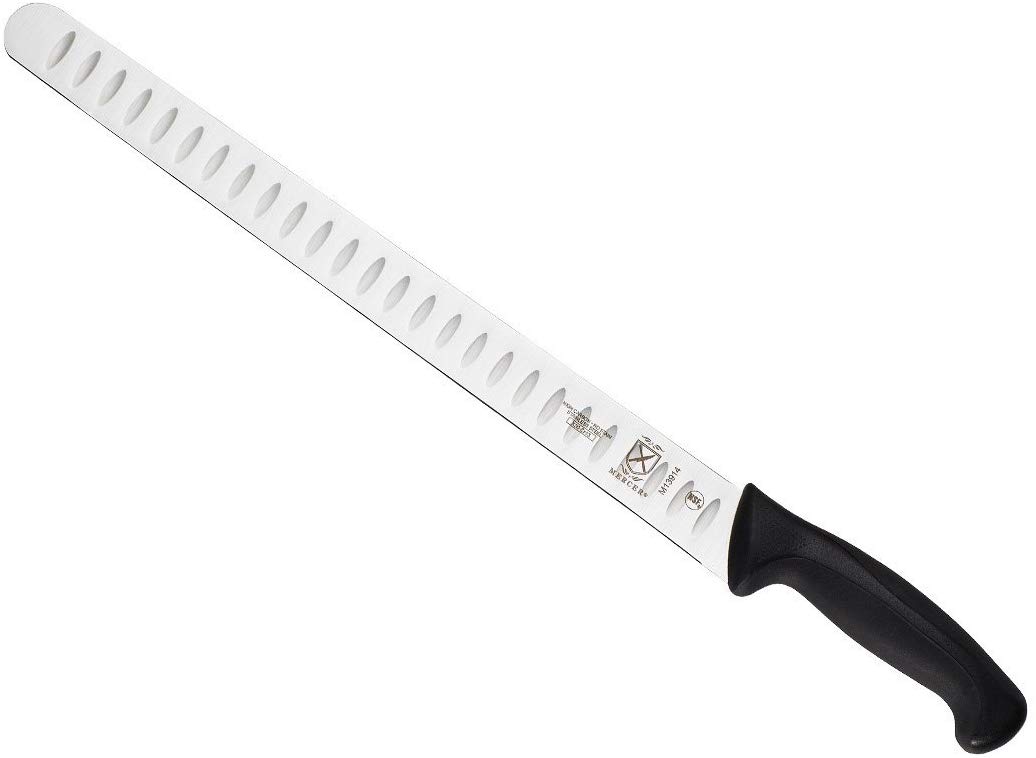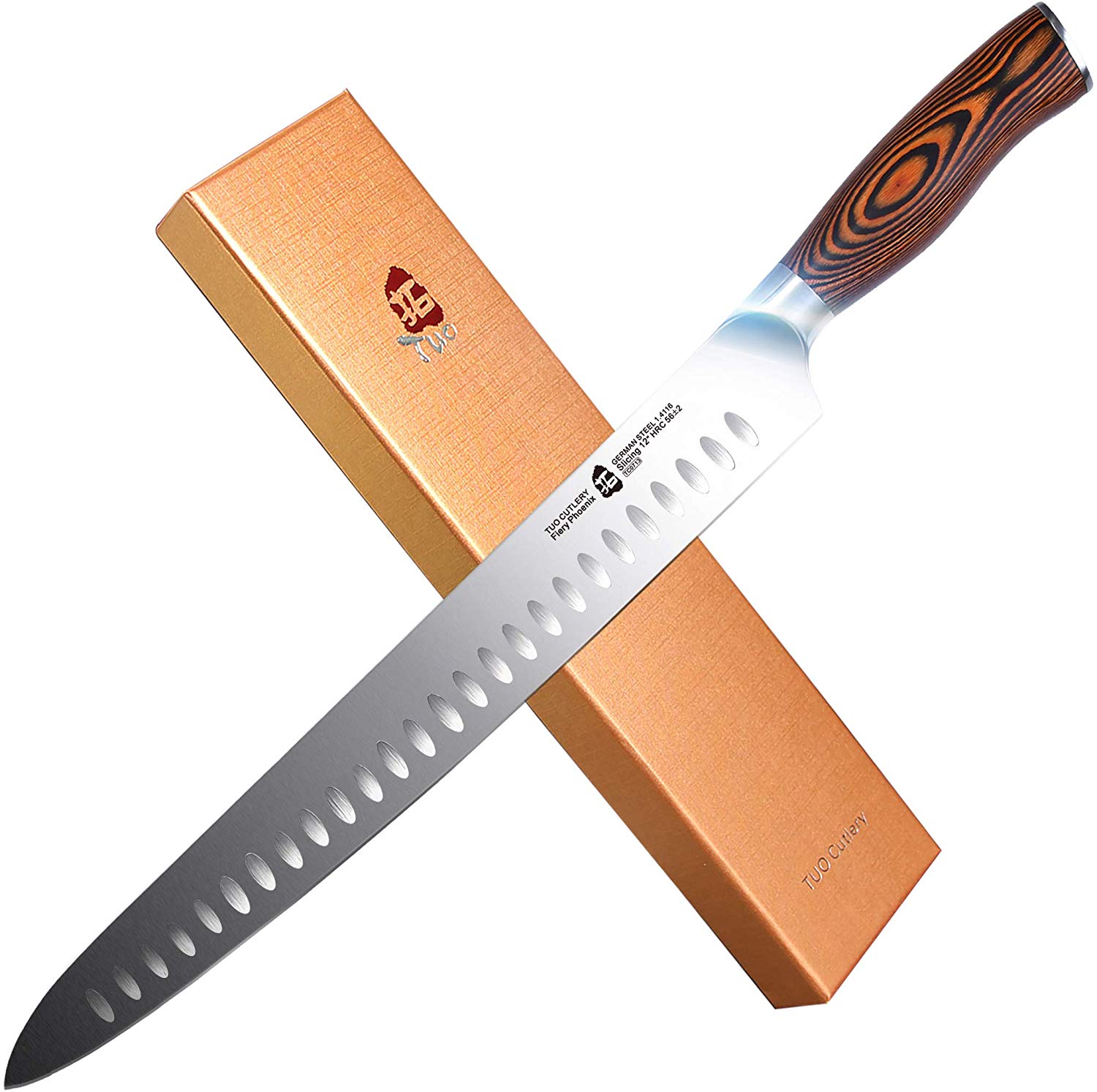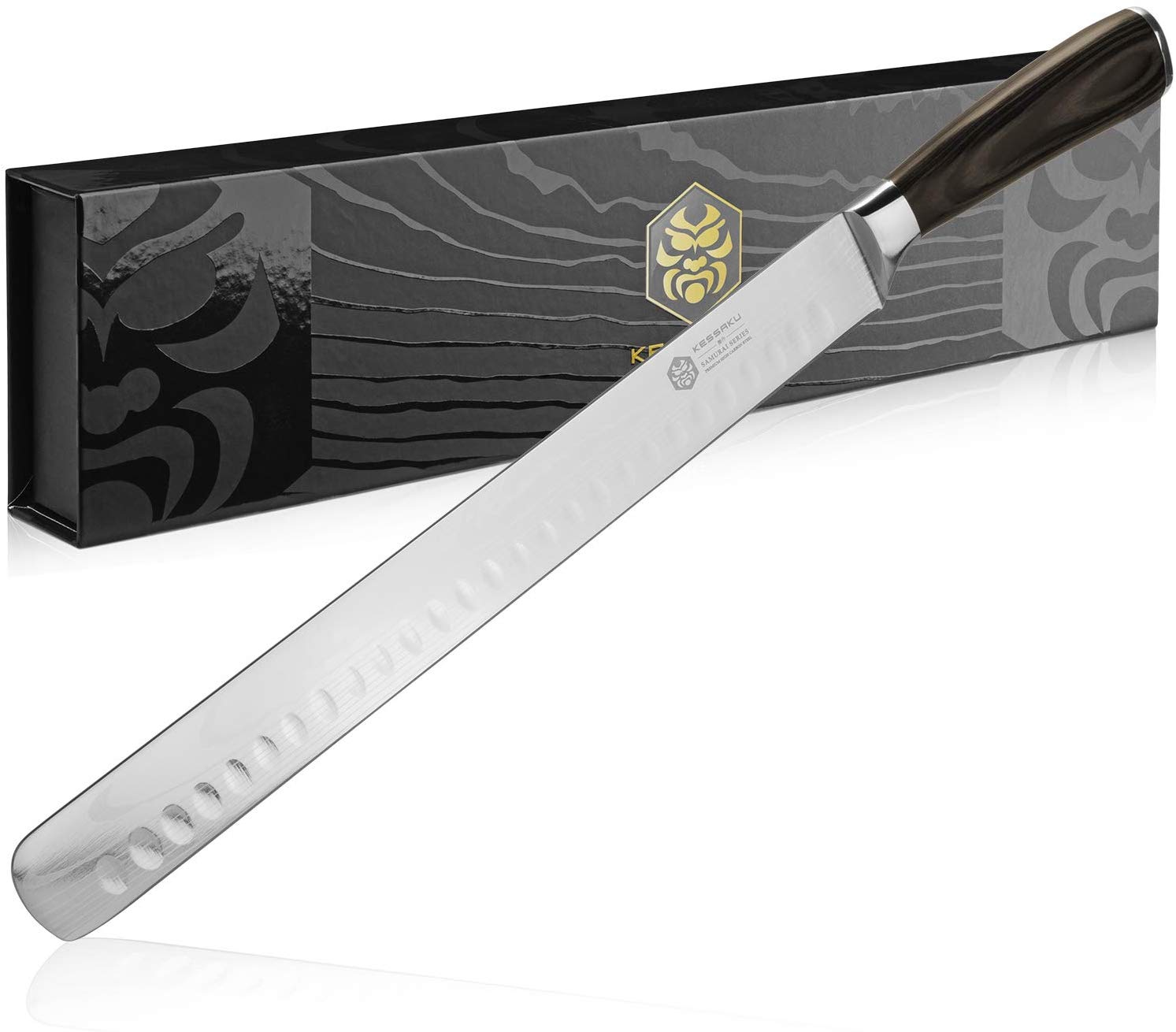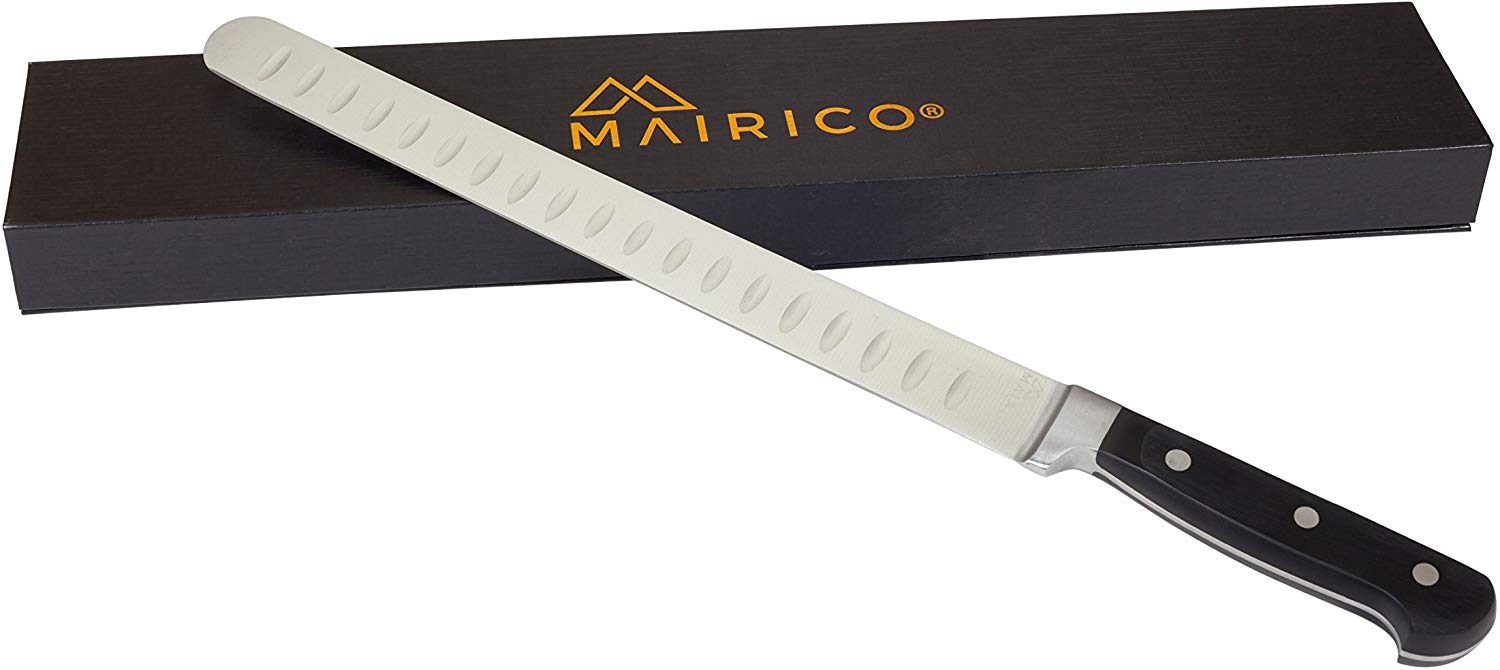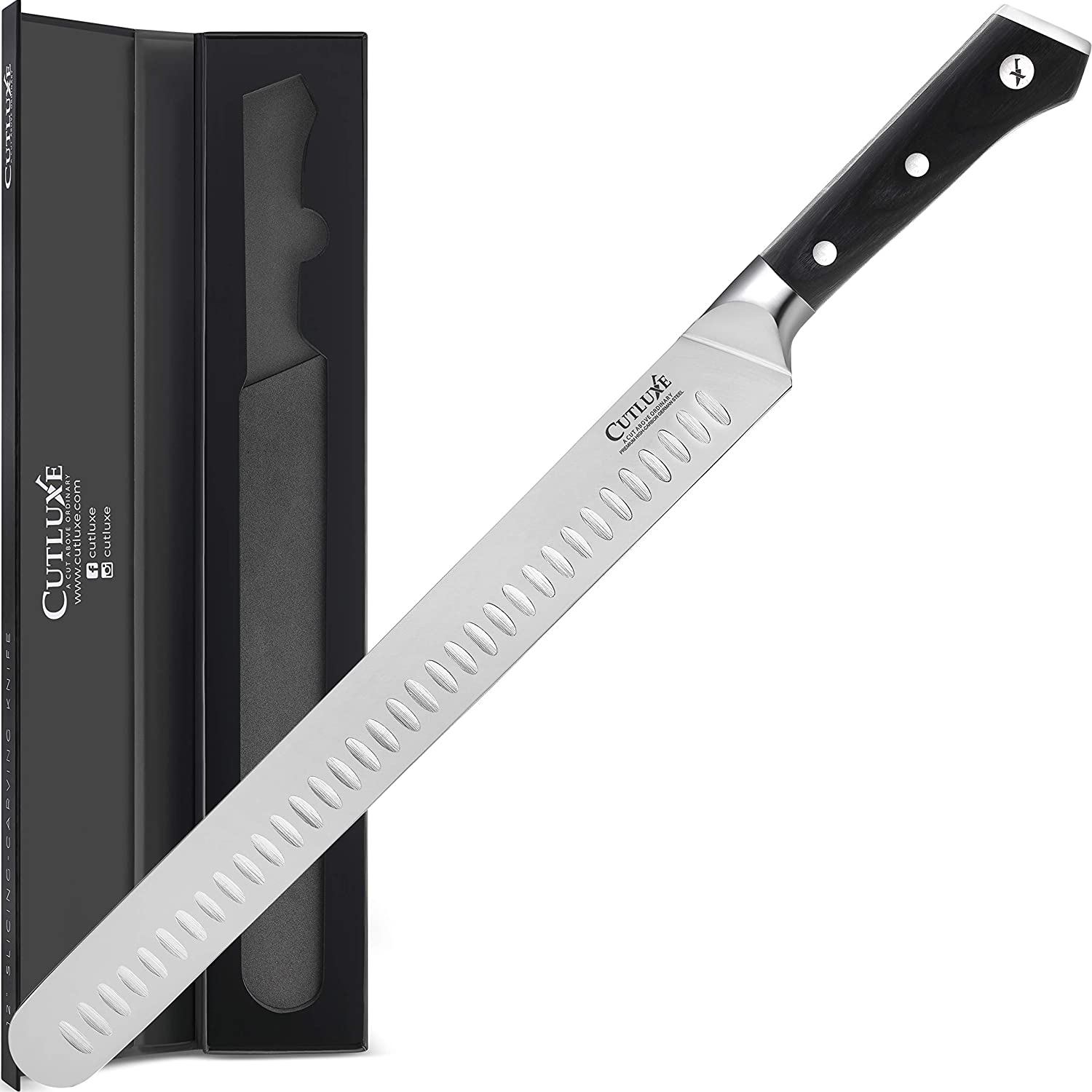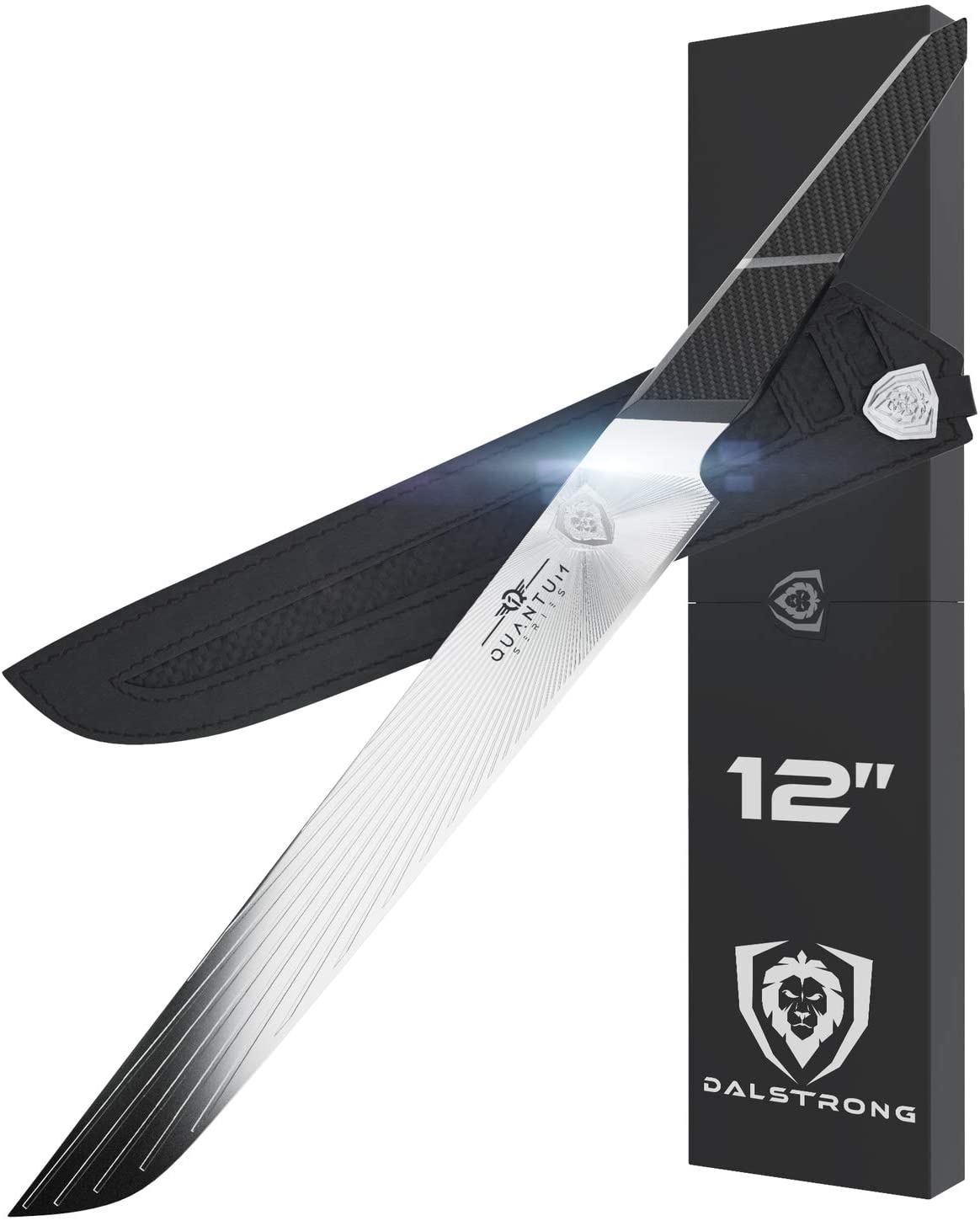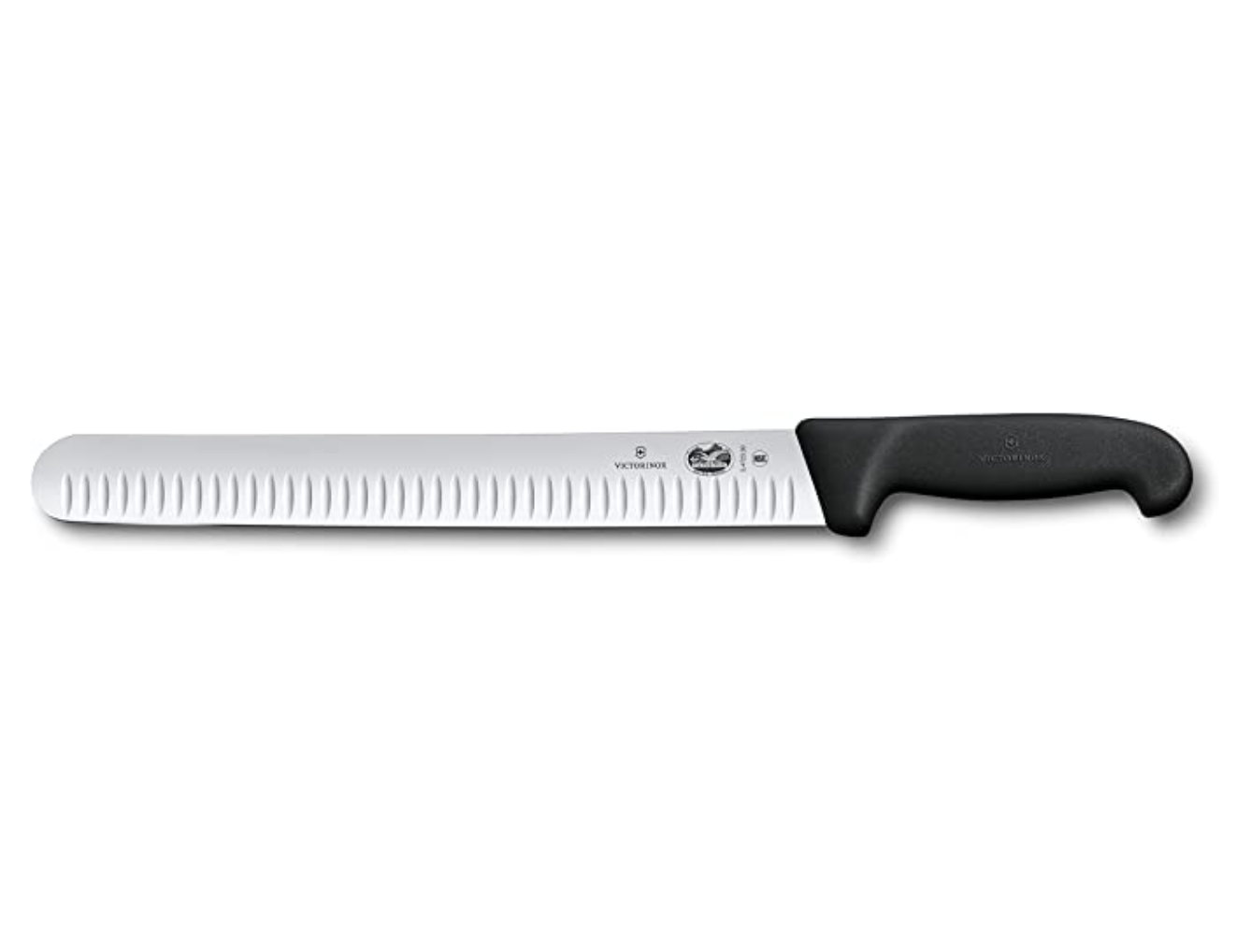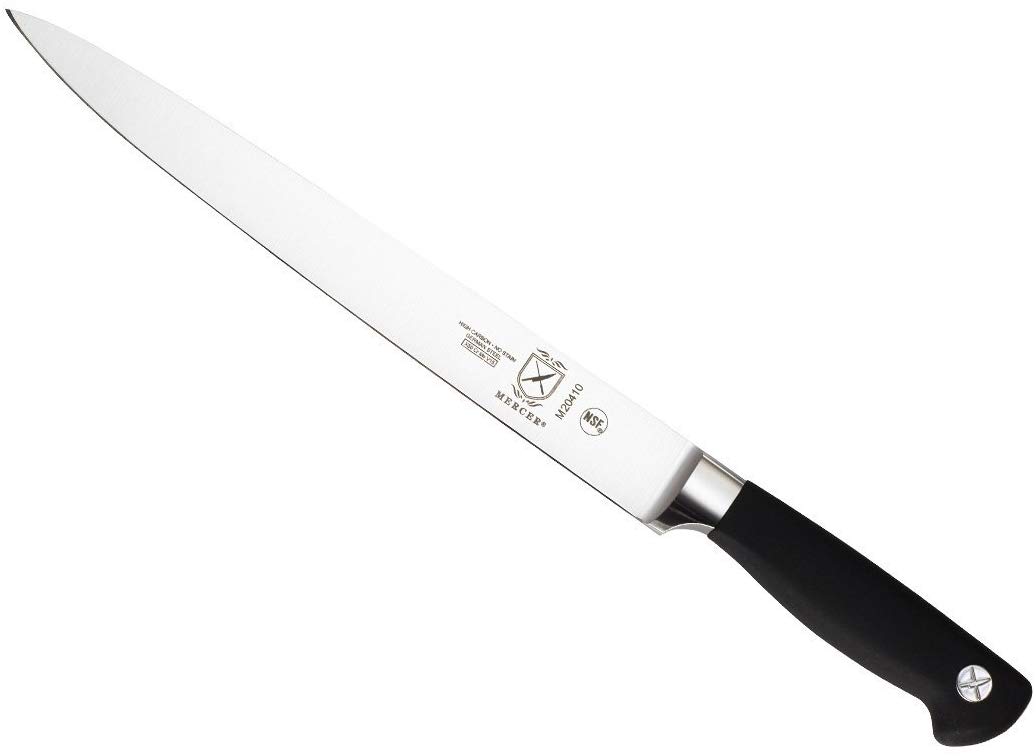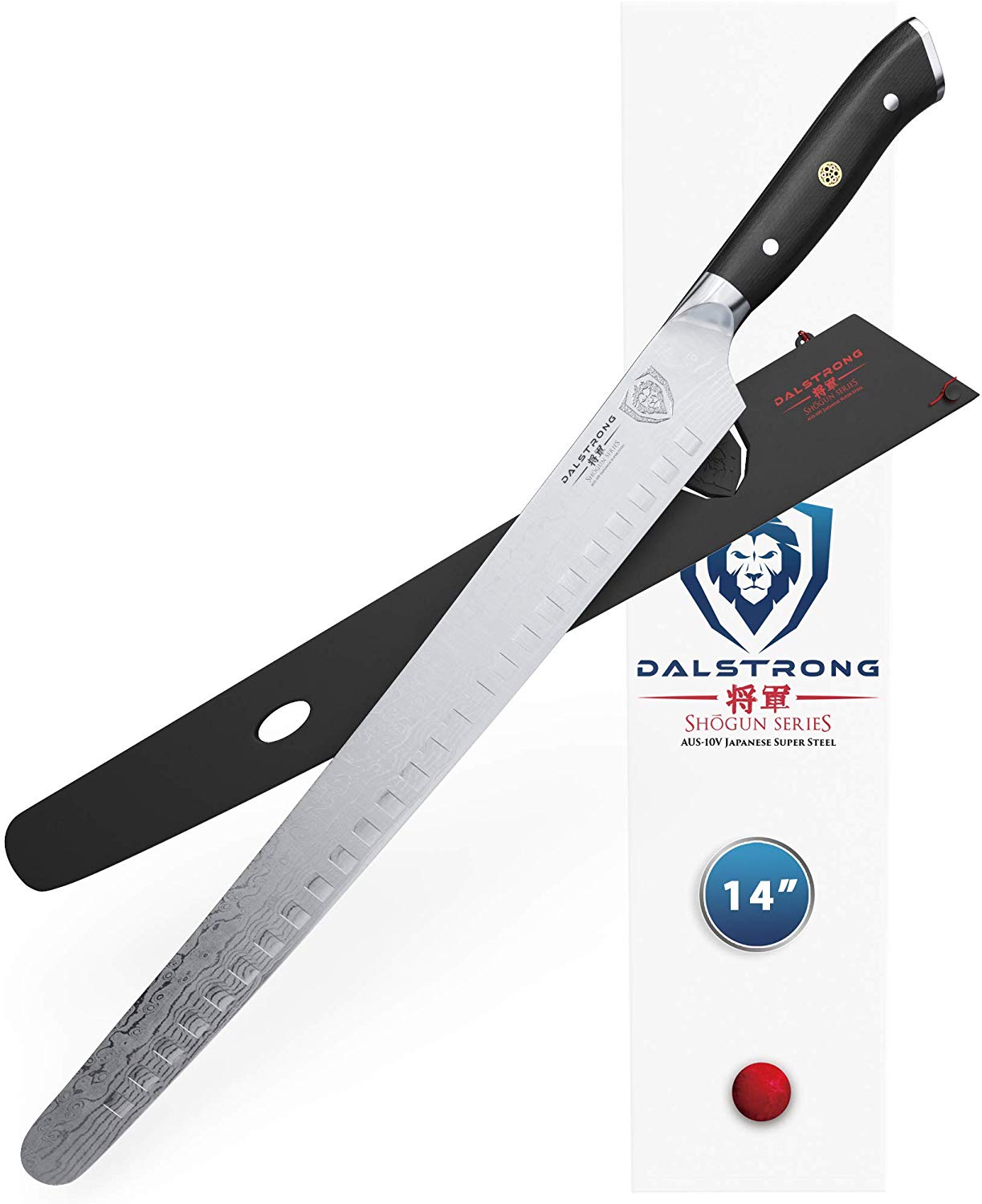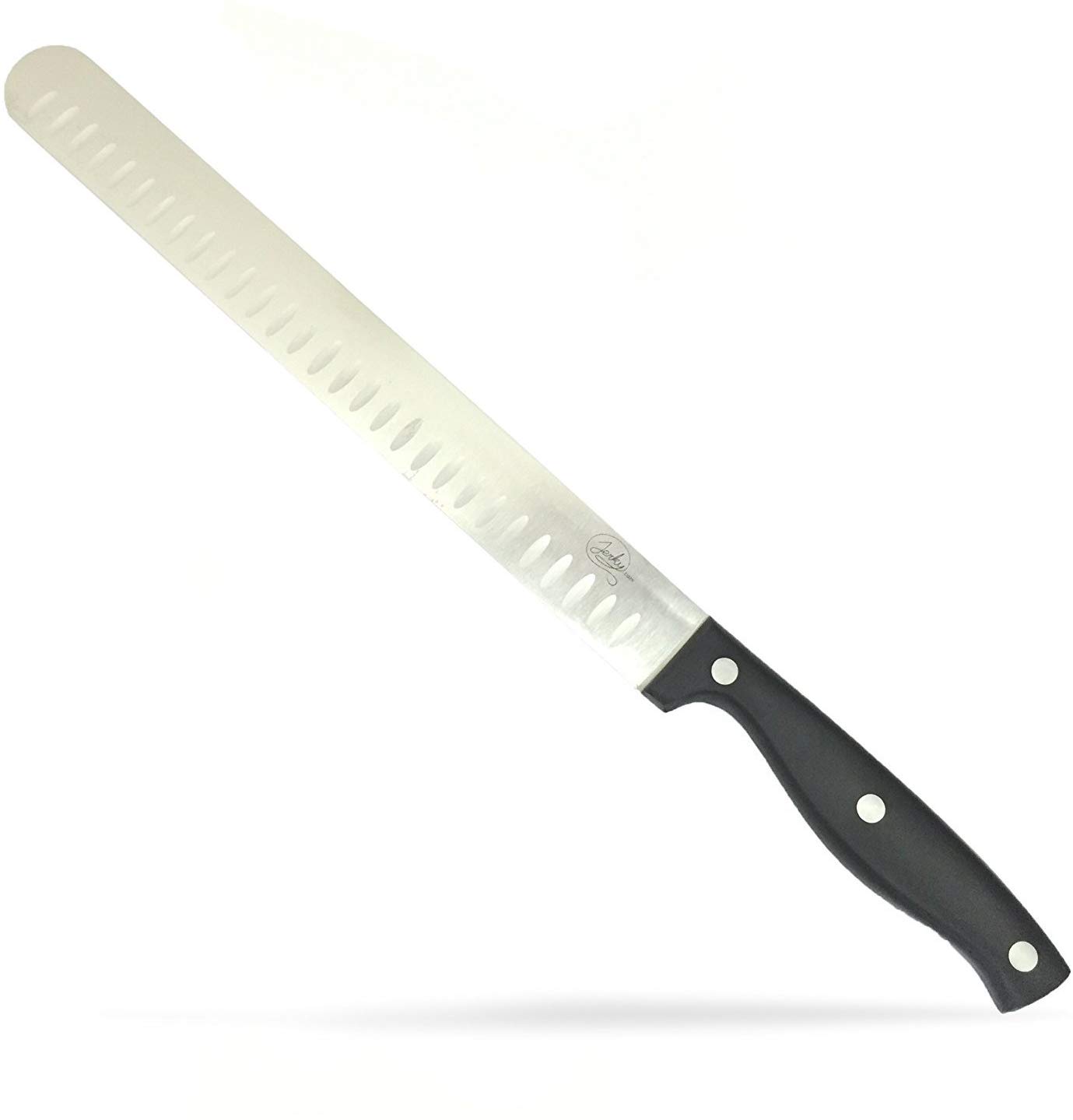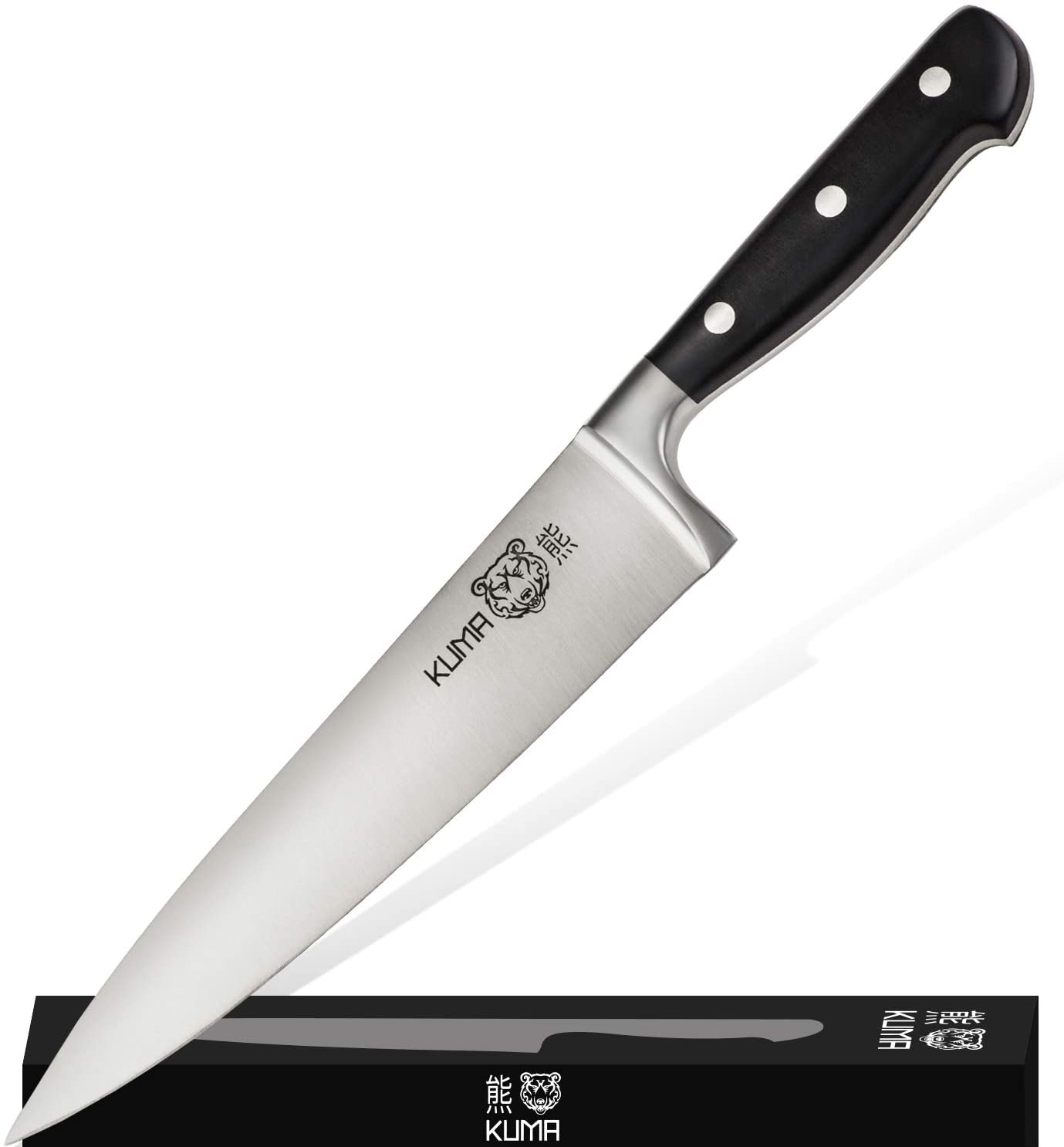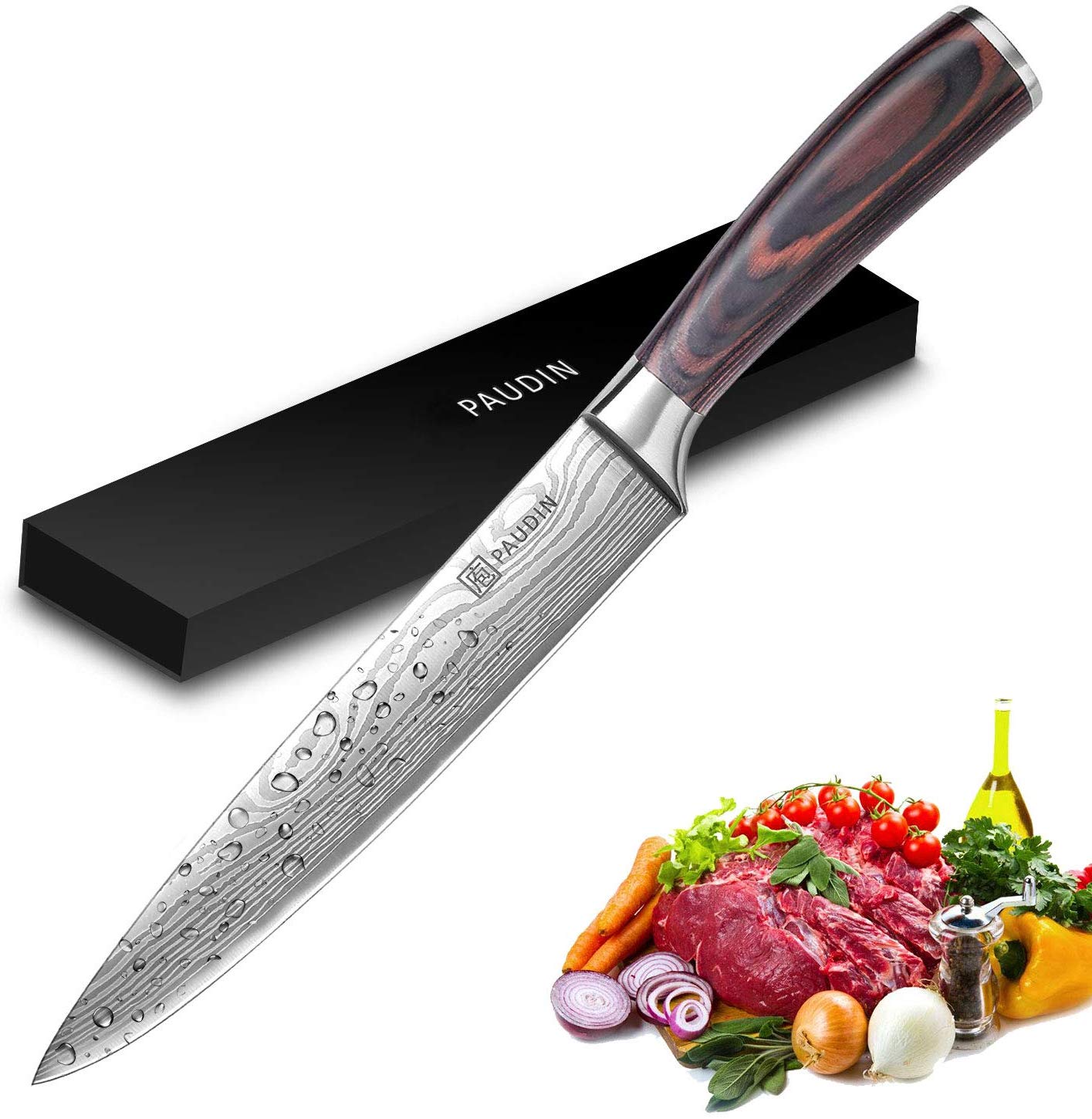With a combination of Santoprene for comfort and polypropylene for longevity, the Mercer Culinary Millennia’s handle has the slip-resistance you’d expect from a professional model at a fraction of the price. The Japanese steel blade is razor sharp, too.
The ergonomic handle is durable and very functional.
As this is a high carbon blade, it keeps a razor-sharp edge which is particularly helpful when needing to slice meat thinly and uniformly. It is also suitable for commercial kitchen use as it has been NSF certified.
The straight edge can easily be sharpened and honed, but the Granton bevels allow for smooth slicing through just about any food.
The thinness of the blade and 17 degree bevel angle allows you to cut extremely accurate, straight lines. We’ve made it pretty clear that we are big fans of the granton grooves which help you avoid the blade sticking while slicing brisket.
It’s dubbed the Granton Edge Slicer, thanks to its well defined and extra sharp blade. The blade of the knife is made from Japanese steel and looks premium to both look and touch.
The knife feature non stain Japanese steel that razor sharp straight from the box. The steel blade has high resistance to rusting, corrosion and discolouring. The edge on the knife is very sharp and this makes cutting and chopping tasks easy ones.
An ergonomic handle makes it easy to use for long periods of time. It features a combination of Santoprene for comfort and polypropylene for durability.
The ergonomic handle is very durable and highly comfortable. It is made of polypropylene which is very durable and also the textured finger points make the knife slip resistant, secure, give a better grip.
This knife is the only knife of our top four list that is NSF certified. Further, the manufacturer company provides the lifetime warranty with this knife.
Its finger points are textured, providing resistance to slipping with better grip, while also having a protective finger guard to prevent you from cutting your fingers.
Since slicing knives nowadays mostly share similar blade features, I love how the Mercer focused on making a better handle while maintaining superior and competitive edges. The ergonomic handles with textured finger points make cutting easier and more secure.
The granton grooves provided on the knife provide you with a smooth slicing experience and ensure that the knife does not get stuck on the fatty parts of the meat.
The handles made of polypropylene and imprinted with finger points. One thing is for sure you will not cut your fingers off with the blade as it has a protective finger guard.
The thin, stainless steel blade offers Granton-style edging to minimize sticking by collecting self-lubrication pockets of fat in the blade while slicing.
The 14 inch blade is constructed from Japanese stainless steel. It will never corrode, discolor or rust. The blade also features divots which stop any meat from sticking.
The Mercer Millenia Granton-Edge Slicer Knife is a quality stamped steel knife with a whopping fourteen inch blade suitable for slicing brisket or just about any cut of meat you can throw at it.
The knife is light so I can’t be so tired in slicing for hours.

